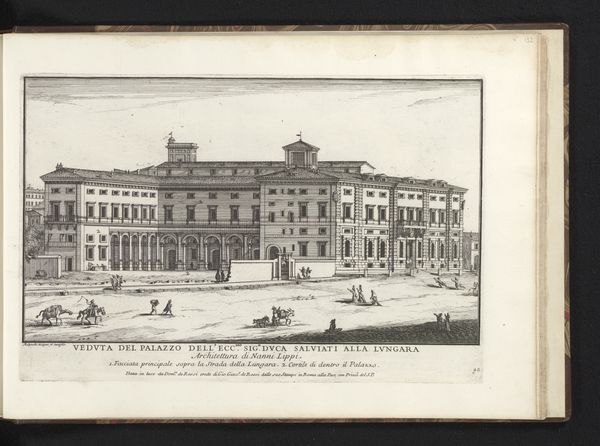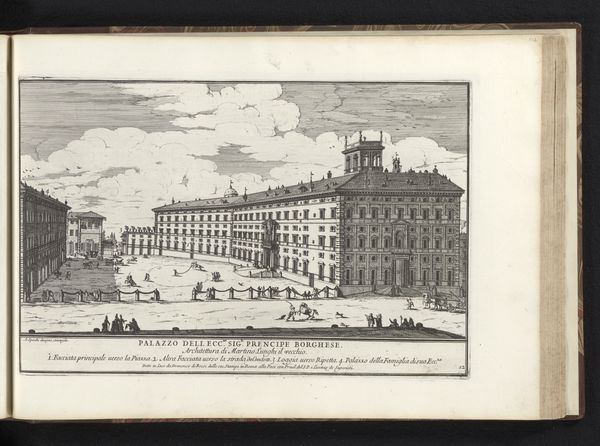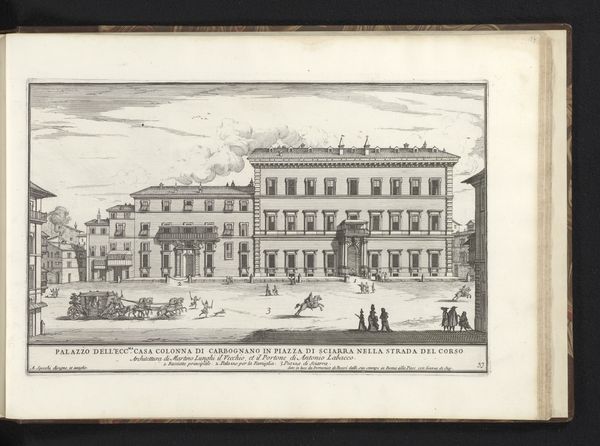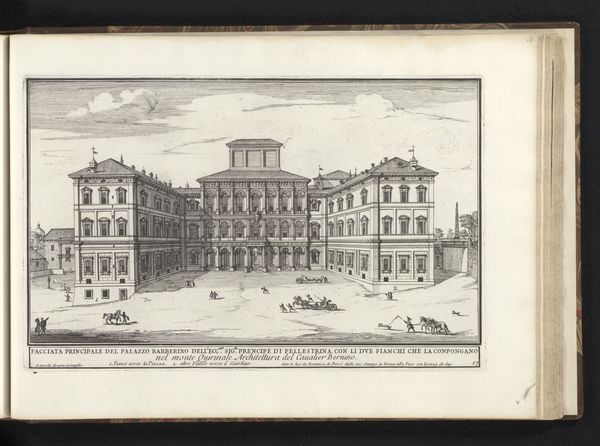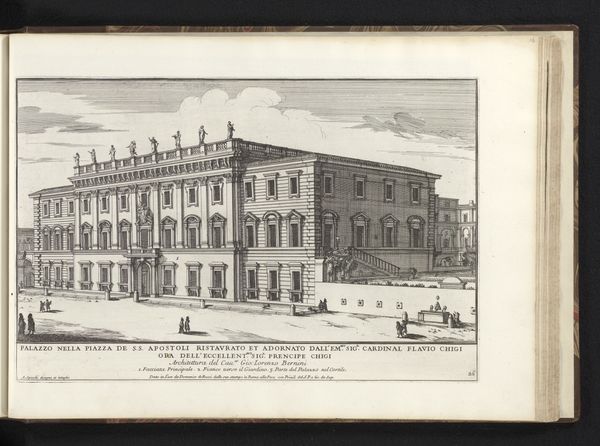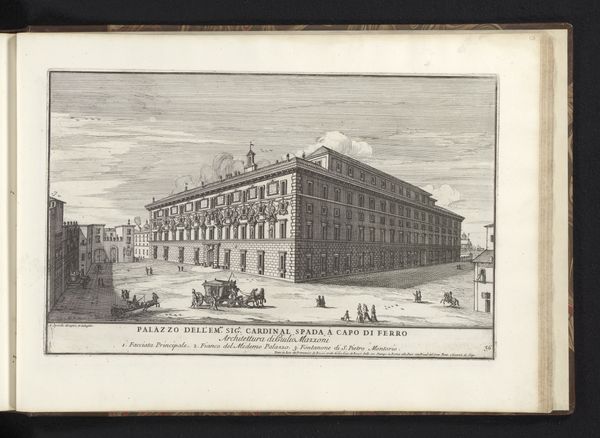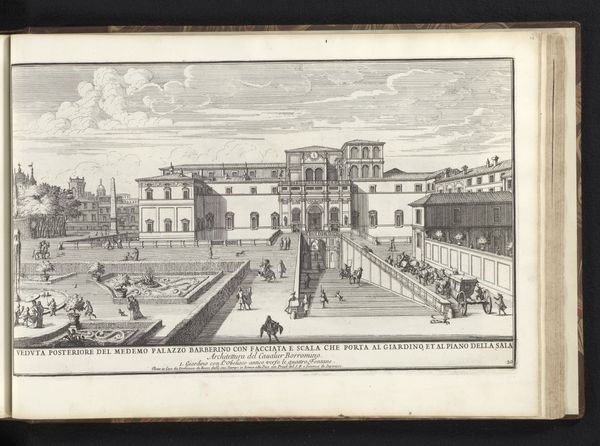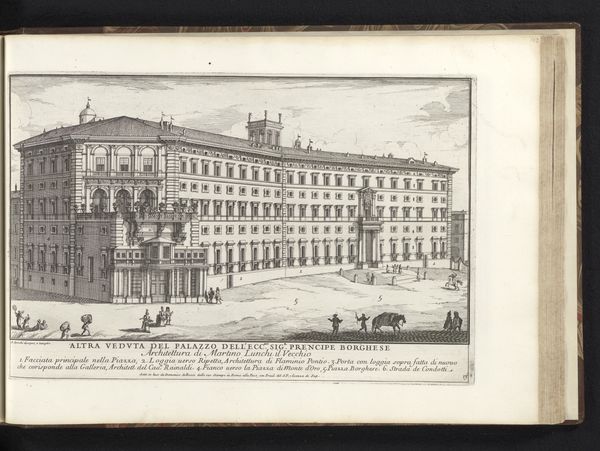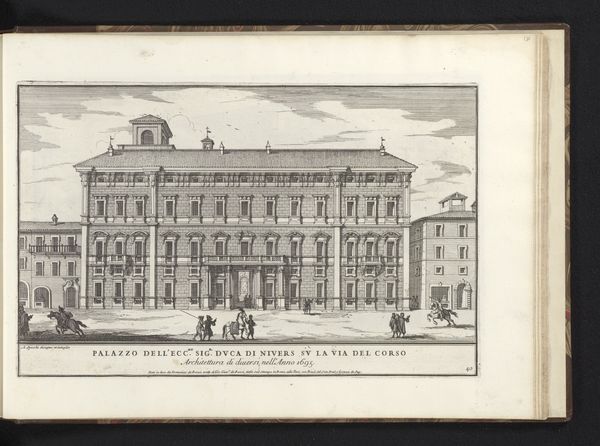
print, engraving, architecture
#
baroque
# print
#
perspective
#
line
#
cityscape
#
history-painting
#
engraving
#
architecture
Dimensions: height 210 mm, width 331 mm
Copyright: Rijks Museum: Open Domain
Curator: This print from 1699 by Alessandro Specchi captures the grandeur of the Palazzo Barberini in Rome. What strikes you first about it? Editor: Its stillness. Despite all those tiny figures scurrying around in the foreground, there's a sense of hushed importance, like the building itself is observing centuries unfold. And the stark lines of the engraving highlight its overwhelming size! Curator: That stillness speaks to something essential about Baroque aesthetics, where architecture aimed to embody power and permanence. Specchi presents not just a building but a symbol of authority. How do you see the people fitting into this scheme? Editor: Well, they feel a bit like ants crawling around a majestic anthill! The people definitely amplify the Palazzo's imposing presence, which almost feels… theatrical? The way perspective is used almost flattens the space, turning the scene into a stage. Curator: Precisely! Prints like these served a critical function at the time, solidifying both the physical structure and its role within Roman society in the cultural imagination through repeated viewing. Mass production allowed dissemination of its cultural power across the continent, making its image—beyond its walls—an active participant in power dynamics. Editor: So it’s about more than just the pretty picture. It’s about power, really. You know, those crisp lines and almost exaggerated perspective make it seem, in a way, cold. It feels staged for effect more than anything. What you get are the angles without the soul. Ironic, isn’t it? Considering all the life supposedly bustling in front! Curator: I would add that it freezes an idea of urban space where power expresses itself most intensely via stone, order, and lines, fixing its existence in collective memory. It doesn't leave room for life—life, with its unpredictable messiness, serves instead as decoration, subservient. Editor: Seeing it that way… I admit there is something profoundly sad about it now.
Comments
No comments
Be the first to comment and join the conversation on the ultimate creative platform.
